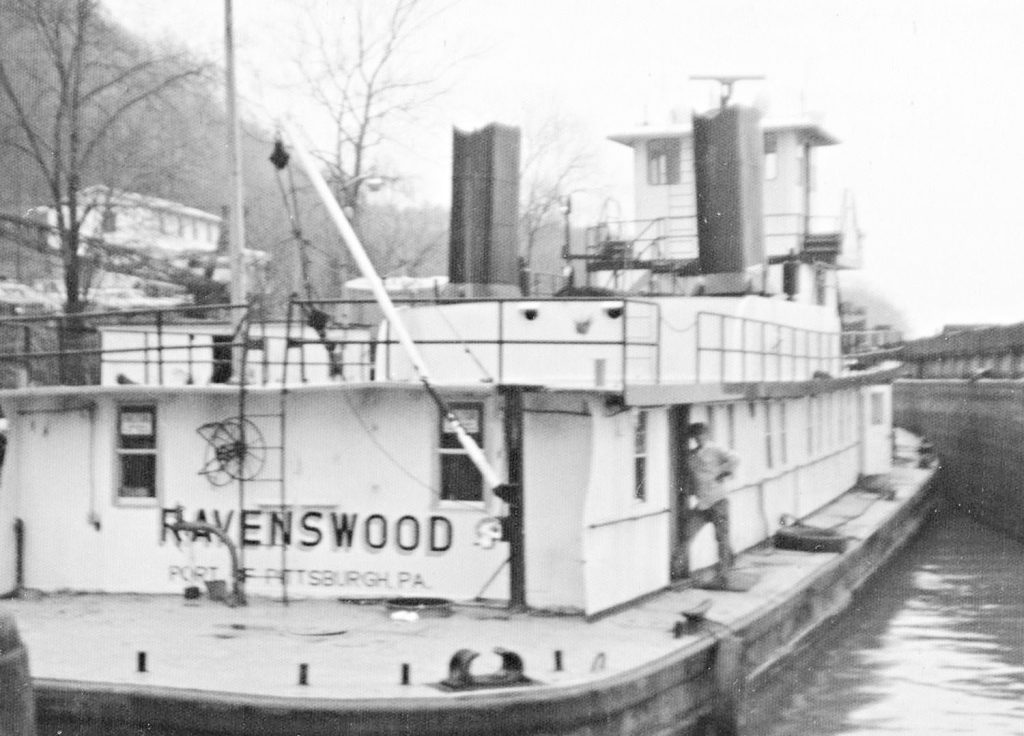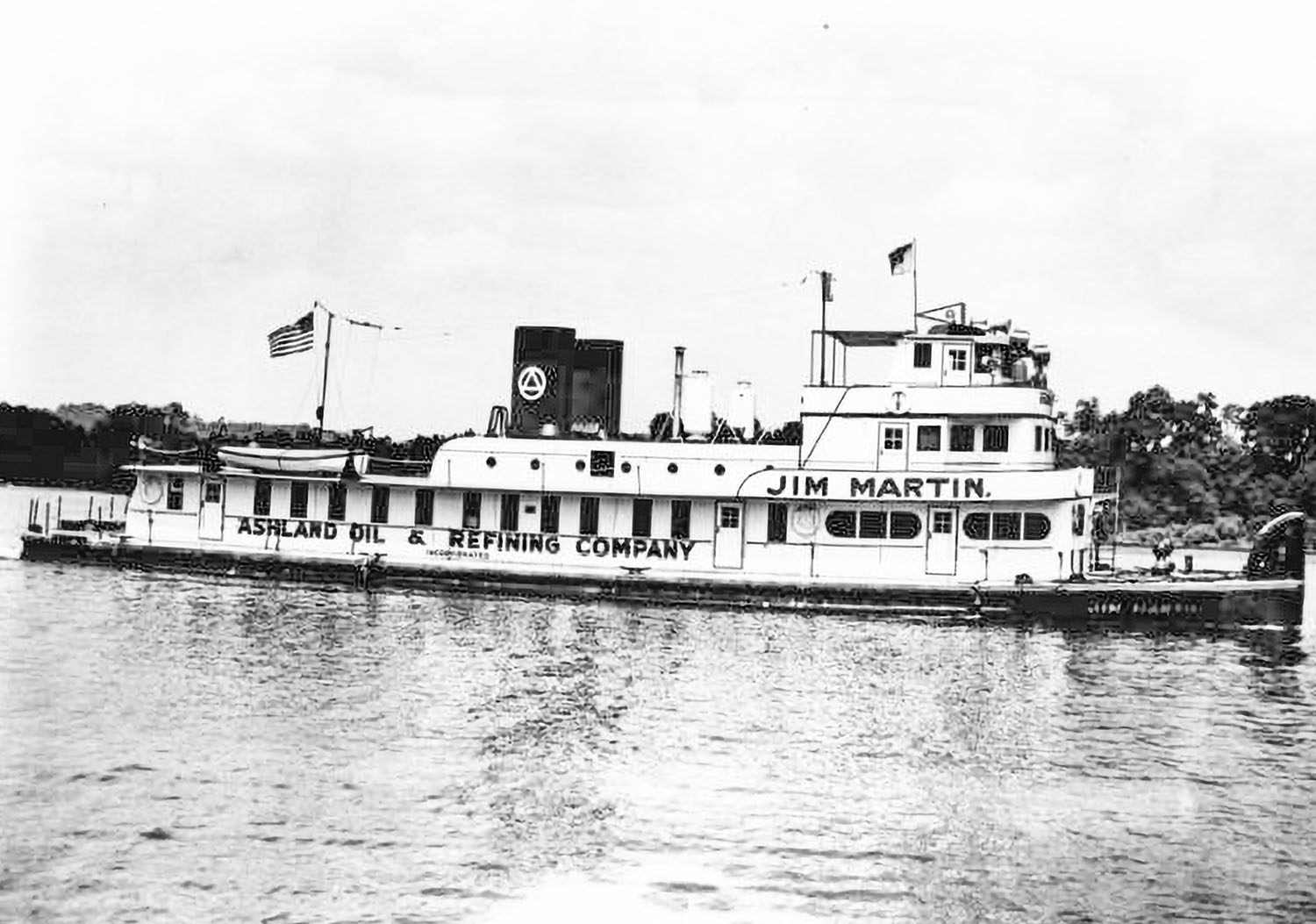As detailed in this column when writing about the 300 hp. Senator Combs in the October 10, 2022, issue of The Waterways Journal, Ashland Oil & Refining Company came into being 100 years ago when the Swiss Oil Company hired Paul Blazer to find an existing oil refinery for the company to purchase.
Blazer settled on the Great Eastern Refinery, located on the Big Sandy River near Catlettsburg, Ky., and it was purchased on January 26, 1924. A small sternwheel towboat named Colonel was included in the sale of the refinery, which was placed under a new company called Ashland Refining Company, with Blazer in charge. Within a short time, another small sternwheel gasboat named Scout was acquired, soon to be followed by a little larger sternwheeler named Ruth-Ann. In 1936, the concern went modern with the addition of the twin-screw Senator Combs.
Also in 1936, Swiss Oil and Ashland Refining were combined to become the Ashland Oil & Refining Company (AO&R). Blazer was the head of this company, and in effect the child had swallowed the parent. Business for the company was on the upswing, yet Blazer was concerned about competitors utilizing the waterways. In “The Exception,” a book about the company by Otto J. Scott that was published in 1968, a letter written by Blazer to associates is quoted as saying, “At times I can look from my office window and see barges moving down the Ohio River … carrying gasoline, which originated at refineries on the Atlantic seaboard, and also see barges moving up the river carrying gasoline from points on the Mississippi River.”
These concerns caused Blazer to start planning a new and larger towboat to be used in conjunction with the Senator Combs. A small item in the October 28, 1939, issue of the WJ stated that “The Ashland Oil & Refining Company is reported to have placed a contract with the Calumet Ship Yard and Dry Dock Company, Chicago, for the construction of an all-welded, steel hull, twin screw diesel towboat of 1,150 horsepower.” The selection of a shipyard in faraway Chicago is not so surprising considering that Blazer was a Chicago native, and Chicago financier James Martin was a close friend and serving as chairman of the board for AO&R.
The new boat came out in June 1940 and was named Jim Martin. The hull was 128 by 30 feet, and it had a pair of Fairbanks-Morse five-cylinder direct-reversing diesel engines developing 1,150 total horsepower at 300 rpm. The boat had a full lower cabin with a smaller upper cabin surmounted by a pilothouse that was small by steamboat standards. A pair of straight smokestacks were located mid-way of the roof and mounted on top of an engineroom skylight. The boat was painted with a dark color—perhaps black—on the skirts outside the cabins, gray on the bulkheads below the handrails and very little white paint in evidence. The vessel was designed by Chicago marine architect A.M. Deering.
Blazer was no doubt excited about having the Jim Martin in service, but, even before the boat left Chicago, plans were underway to vastly expand the fleet with a trio of even larger towboats. They would also be built by Calumet and designed by Deering (whose first name was Augustus, and Robert L. Gray, long in the marine department of Ashland, always referred to him as “Gus”). But for a time, the Jim Martin was the mainstay and flagship of a very busy fleet, as AO&R seemed to be constantly expanding. In late 1941, the paint scheme was changed to all-white trimmed in black, and the stacks painted red with black rims.
Many men with whom this writer served at Ashland Oil when going to work there in the mid-1980s had started their river career on the Jim Martin. The late Capt. Max English started on it as a new deckhand in the 1950s, and Capt. Lonnie Ryan broke in as steersman on it, standing his first pilot watch aboard in 1956. Now 94, Capt. Ryan still refers to the boat affectionately as “The old Martin.” The late Capt. Johnny Maxie was also a young pilot on the Martin and spoke about how the engines turned so slowly that you could tell little difference between slow speed and full ahead.
The Inland River Record says that in March 1959, the Jim Martin was sold to B&B Towing Company, Point Pleasant, W.Va., and renamed Ravenswood. The List of U.S. Merchant Vessels shows ownership in this timeframe as Ravenswood Investment Corporation, Pittsburgh. In 1961, the boat was transferred to Bartley Towing Company, Portsmouth, Ohio. The boat continued to tow under contract to AO&R, and in October 1962 it suffered a fire at Ashland, Ky., that severely damaged the pilothouse. The boat was rebuilt at Dravo, Neville Island, Pa.
In 1965 the Ravenswood was repowered with a pair of Cat D-398B engines totaling 1,530 hp. In 1967, the IRR shows the boat as owned by Bartley but now operated by Columbia Marine Service, Cincinnati. On March 24, 1972, while upbound on the Ohio River near Wheelersburg, Ohio, the Ravenswood burned to a total loss. The Valvoline and Buckeye State were nearby, rescued the crew and fought the fire. While still listed as owned by Bartley and definitely still being operated by Columbia Marine, the owner was listed in some places following the fire as M/V Ravenswood Inc. with the address the same as the corporate headquarters of Ashland Oil, Inc. (which AO&R had become in 1966).

The burned hulk was sold to South Point Barge Company, South Point, Ohio, which completely rebuilt the boat. The badly damaged upper cabin and pilothouse were replaced with new structures, but the original stacks remained, and forever after had a slight inboard cant to them. The Cat engines were retained, and the boat was sold to Crain & Pushak Towing Inc., Glenwillard, Pa., in late 1975 or early 1976. Later in 1976, the boat burned for a final time at Steubenville, Ohio.
The hulk was sold to Capt. Robert H. Bosworth, Point Pleasant, W.Va., who used it as a landing boat. Later, after it sank and the cabins were removed, the hull remained in place and was used as a fleet head wire anchor for what is still known as the Ravenswood fleet, on the left bank at Mile 268 Ohio River.
Caption for top photo: As the Jim Martin in a photo featured in the AO&R ad in the initial 1945 Inland River Record. (Author’s collection)
Capt. David Smith can be contacted at davidsmith1955obc@gmail.com.



